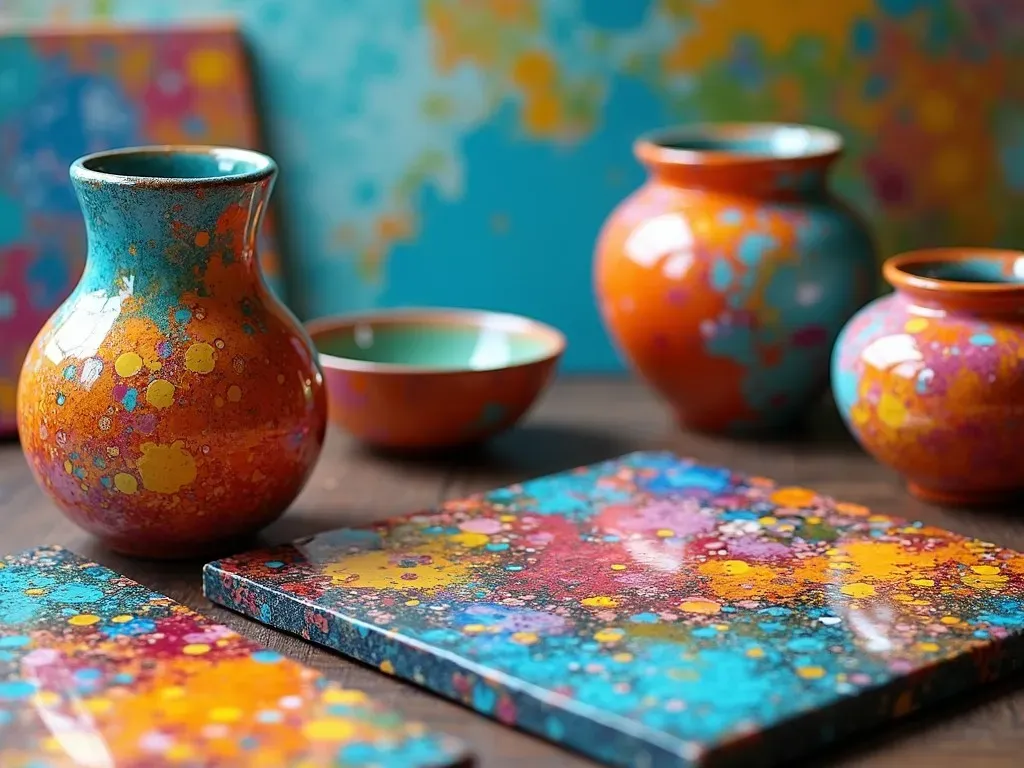Glaze painting technique is a method where thin transparent or semi-transparent layers of paint are applied over a dried layer to modify the underlying colors and effects. This technique is prevalent among oil painters and can dramatically alter the chroma, value, hue, and texture of the surface, providing depth and luminosity to the artwork.
The glaze painting technique serves as a bridge between realism and impressionism, allowing artists to create more dynamic and engaging pieces. By layering different colors, artists can achieve nuanced tones and intricate shadows that bring their work to life. The importance of understanding this technique cannot be overstated for both amateurs and seasoned artists alike.
Understanding the Essence of Glaze Painting Technique
-
What is Glazing?
Glazing is the process of applying a transparent or semi-transparent layer of paint over an already dried paint layer. The primary purpose of glazing is to modify the depth and character of the underlying paint, allowing for a richer visual experience. -
Why Use Glazing?
Glazing Techniques allow an artist to adjust the appearance of a painting without altering the original base layer drastically. This flexibility enables artists to bring out colors, create shadow effects, and introduce luminosity.
Basic Principles of Glazing
-
Transparency: The glaze is typically composed of a high proportion of medium to pigment. The medium allows the artist to create thin, transparent layers.
-
Layering: Multiple layers can be applied, each enhancing the previous layer. The artist should ensure that each layer dries completely before adding another to avoid mixing.
-
Color Modification: The glaze can change the overall color of the painting without completely masking the base layer. Different combinations of pigments can create an endless range of tonal possibilities.
Table 1: Comparison of Glazing Materials
| Material | Characteristics | Best Use |
|---|---|---|
| Oil Paint | High viscosity, excellent blending | Traditional oil glazing |
| Acrylic Paint | Fast-drying, versatile | Quick glazing techniques |
| Watercolor Paint | Thin, fluid, easy to manipulate | Subtle glazing effects |
| Enamel Paint | Hard and glossy finish | Decorative art |
Techniques for Successful Glazing
-
The One-Pigment Glaze: This involves creating a glaze using only one pigment mixed with a medium. It’s an effective way to ensure the luminance of colors remains intact.
-
Color Shift: Mixing different pigments can shift the color of the base layer. For instance, a warm yellow glaze over a cool blue base can yield a greenish hue.
-
Scraping and Blending: Using palette knives or brushes, artists can manipulate layers of glaze for desired effects.
Glazing Process Step-by-Step
-
Prepare Your Base Layer: Start with a complete and dried painting that serves as your base layer. Ensure that the surface is clean.
-
Mix Your Glaze: Combine your chosen pigment with the painting medium to create a semi-transparent mixture.
-
Application: Use a soft, clean brush to apply the glaze in thin, even layers.
-
Evaluate and Adjust: After applying, step back, evaluate the effects, and decide if more layers are needed.
-
Dry Completely: Allow each layer to dry completely before adding another to prevent mixing or muddying of colors.
Impact of Glazing on Artworks
The glazing technique can amplify the emotional impact of an artwork. By layering colors, an artist can express feelings, themes, and narratives more vividly.
-
Luminosity and Depth: The depth that can be achieved through glazing creates a three-dimensional illusion, enhancing the viewer’s experience.
-
Subtle Tone Changes: Through glazing, subtle tonal shifts can influence the mood of the piece.
-
Rich Texture: Artists can manipulate texture using glaze, allowing for varied surfaces that catch light differently.
What Are the Challenges?
Although glazing can yield amazing results, it also comes with challenges that every artist should consider:
-
Drying Time: Oil paint takes significantly longer to dry than other media, which can be inconvenient for those looking to work quickly.
-
Unpredictability: Mixing a glaze requires careful consideration of color theory. Incorrect combinations can lead to undesirable results.
-
Layer Management: It’s crucial to manage layers effectively. Too many layers can result in a muddy appearance.
FAQ about Glaze Painting Technique
Q: What is the best medium for glazing?
A: Linseed oil is commonly used for oil painting, whereas acrylic mediums like glazing liquid can work wonders with acrylic paints.
Q: How many layers can I apply with glazing?
A: There is no hard limit, but usually 3-5 layers achieve excellent results without overwhelming the base layer.
Q: Can I use glazing with non-oil paints?
A: Yes, glazing can be successfully applied with acrylics and watercolors as well, but techniques may vary slightly.
Q: What are some famous artists known for using glazing?
A: Historical figures such as Jan van Eyck and contemporary artists like Andrew Wyeth are renowned for their use of glazing techniques.
In summary, the glaze painting technique is a transformative art method that opens a world of possibilities for painters. Whether you’re looking to refine your craft or simply explore a new technique, glazing offers a unique challenge and an opportunity for creative expression.
For further reading on glazing techniques, consider visiting Old Holland.
References
- Wikipedia – Glaze (painting technique)
- Fine Art Tutorials – The Glazing Technique for Oil Painting
- Art Ignition – Glazing Oil Painting: Techniques To Make Your Artworks Shine
